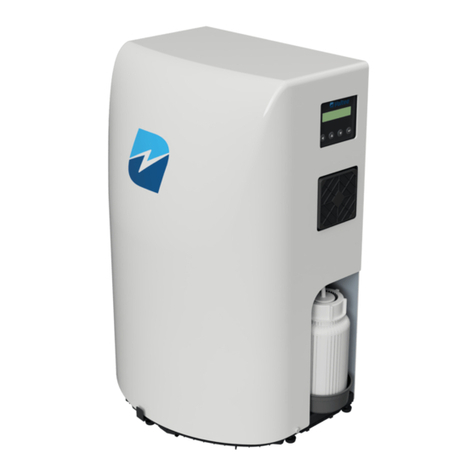
4
8.2.2 Alarms ......................................................................................................................... 26
8.3 Device info .......................................................................................................................... 28
8.4 System ................................................................................................................................ 28
8.4.1 Setpoints ..................................................................................................................... 29
8.5 User functions .................................................................................................................... 30
9 Advance System Functions ...................................................................................................... 31
9.1 Receive data and alarms remotely ................................................................................. 31
9.2 Connecting to laptop and utilizing docklight .................................................................. 32
9.2.1 Downloading Docklight ............................................................................................. 32
9.2.2 Docklight License ....................................................................................................... 32
9.2.3 Laptop connection ..................................................................................................... 32
9.2.4 Docklight ..................................................................................................................... 34
9.2.5 Downloading operational data from the system .................................................... 37
9.2.6 Adding e-mail and telephone users. ....................................................................... 37
9.2.7 Daily summary report ................................................................................................ 38
9.2.8 Remote control through SMS ................................................................................... 38
9.2.9 Firmware update ........................................................................................................ 39
10 Changing Flow Restrictors ................................................................................................... 42
11 Electrical conductivity probe calibration ............................................................................. 43
12 Flushing, Bleaching, Storing and Module Disposal .......................................................... 47
12.1 Flushing the module .......................................................................................................... 47
12.2 Bleaching the module ....................................................................................................... 48
12.3 Storage ................................................................................................................................ 48
12.4 Resuming Operation After Prolonged Storage .............................................................. 48
12.5 Disposal .............................................................................................................................. 48
13 System maintenance ............................................................................................................. 49
14 System components .............................................................................................................. 50
14.1 Electric cabinet ................................................................................................................... 50
14.2 Valves, switches and pumps ............................................................................................ 51
Appendix ............................................................................................................................................. 52
Flow restrictor color and flow ....................................................................................................... 52
Spare parts list ............................................................................................................................... 52
50% w/w citric acid solution preparation .................................................................................... 52





























